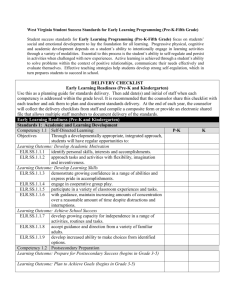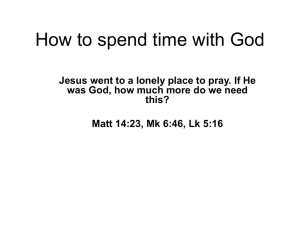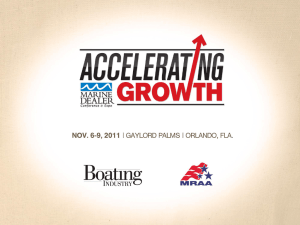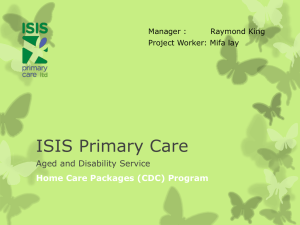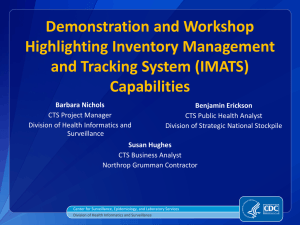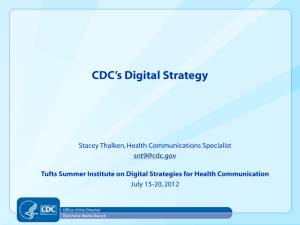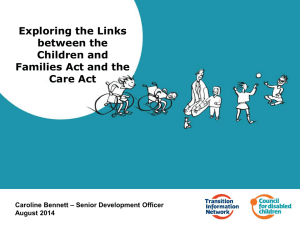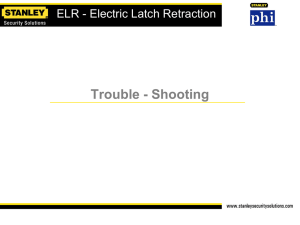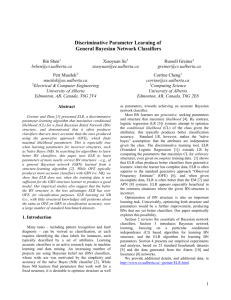phlip - etor
advertisement
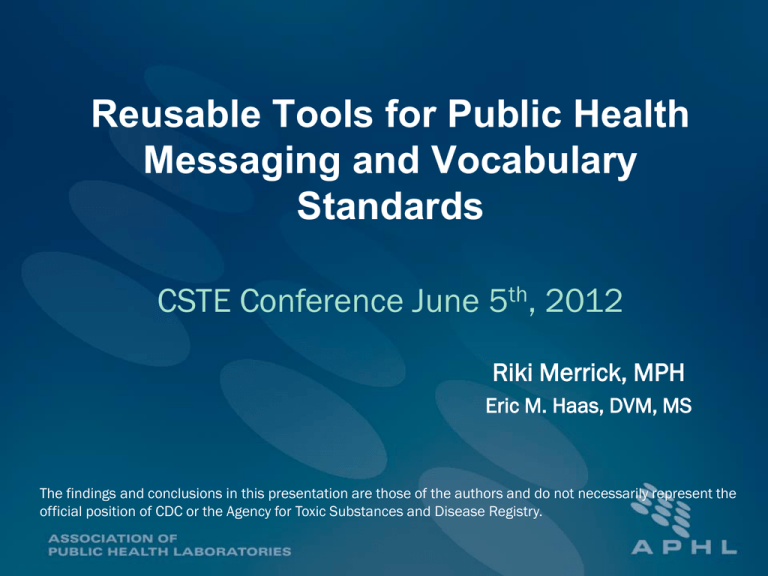
Reusable Tools for Public Health Messaging and Vocabulary Standards CSTE Conference June 5th, 2012 Riki Merrick, MPH Eric M. Haas, DVM, MS The findings and conclusions in this presentation are those of the authors and do not necessarily represent the official position of CDC or the Agency for Toxic Substances and Disease Registry. Overview Public Health Lab Interoperability Project (PHLIP) Introduction Tools and Processes Electronic Laboratory Reporting (ELR) Program Approach Projects Laboratory Technical Implementation Assistance for Public Health (LTIAPH) Electronic Lab Reporting-Technical Assistance (ELR-TA) Tools and Processes re-used PHLIP – Who and What Actors and Use Cases Electronic Lab Surveillance Message (ELSM) • Public Health Lab (PHL) to Centers for Disease Control and Prevention (CDC) WHO Global Influenza Surveillance Network Electronic Test Order and Result (ETOR) • PHL to CDC Lab and back • PHL to PHL and back Route-not-Read (RnR) hubs PHLIP is supported by cooperative agreement #CCU303019 from the Centers for Disease Control and Prevention (CDC). PHLIP – Who and What Standards Used Transport • PHIN-MS Messaging • ELSM – HL7 v2.3.1 ORU^R01 • ETOR – HL7 v2.6 OML^O33 and OUL^R22 Vocabulary • • • • • LOINC for ordered and resulted tests SNOMED for results SNOMED and HL7 for specimen terms UCUM for units HL7 elsewhere in the message PHLIP – … and Why PHLIP PHLIP - ELSM PHL 1 sends ELSM to CDC PHL 1 PHL 2 using the RnR hubs PHLIP - ETOR PHL 1 sends ELSM to CDC PHL 1 PHL 2 can do ETOR with CDC PHL 2 All are using the RnR hubs PHLIP - Big Picture PHL 1 sends ELSM to CDC PHL 1 PHL 2 can do ETOR with CDC PHL 2 PHL 1 and PHL 2 can do ETOR with each other All are using the RnR hubs PHLIP – ELSM: Current Activities Data exchange requirements developed and released PHLIP Workgroup (PHLs and CDC) collaboratively build knowledge and improve process Technical Assistance Team (TAT) supports implementation virtually and on site since March 2010 Technical Architecture Project Management Terminology PHLIP - ELSM Map June 2012 As of June 1, 2012: 36/57 PHLs sending production data PHLIP – ETOR Current Activities Pilot implementation for Salmonella orders from 3 SPHLs to CDC and result messages back to SPHLs Pilot testing of PHL to PHL ETOR for Influenza surge capacity in 2 PHL groups IA - NE – MN and FL - TX PHLIP– Tools and Processes Working Group Calls SharePoint for all documents/resources Data Collection Sheet Messaging template Encoding guideline Specimen Cross-Mapping Table NND harmonization Prioritization PHLIP Technical Assistance Team (TAT) PHLIP - Processes Different Calls for different Use cases and topics: Problem solving Core Group Vocabulary Implementation Issues Formalizing Decisions Change Control Board APHL Informatics SharePoint APHL Informatics SharePoint: - Messaging guidelines - Vocab Resources - Definitions/conventions - Contact Information - Helpful Links - Project Management - Information about other APHL Informatics programs PHLIP - Data Collection Sheet PHLIP - Messaging Template PHLIP - Encoding Guideline Working Group Calls PHIN VADS Value Sets Current value sets for ELSM, ELR HL7 v.2.5.1, and many other message guides: https://phinmqf.cdc.gov/default.aspx PHIN Message Quality Framework PHIN MQF Validation Tool: https://phinmqf.cdc.gov Specimen Cross-Mapping Table PHLIP - Meet the TAT Project Management Terminology Technical Architecture ELR initiative – What is it Vision Programs Data Flow Program Approach Vocabulary & Messaging Guidance Technical Implementation ELR initiative – Vision Provide assistance to Public Health Labs and Public Health Agencies Promote interoperability Promote adherence of messaging and data standards amongst data exchange partners including LOINC, SNOMED and HL7 messages Enable state public health labs (SPHLs) to exchange laboratory data with public health agencies (PHAs) building the data exchange infrastructure for other use cases One-on-one tailored technical assistance, while developing a common baseline/framework and reusable components. Collaborate with each other as well as other national efforts ELR initiative – Programs 2010-2012 LTIAPH: Laboratory Technical Implementation Assistance for Public Health ARRA HITECH grant for 10 ELC grantees plus 2 guests Data flow from PHL to PHA Consultative (not prescriptive/enforcer) role ELC grantee list: Arizona, Florida, Houston, Iowa, Massachusetts, Michigan, New York State, Philadelphia, Rhode Island, and Virginia LTIAPH is supported by Cooperative Agreement Number 1U50HK000105 from Centers for Disease Control and Prevention (CDC). ELR initiative – Programs 2011 - current ELRTA: Electronic Lab Reporting Technical Assistance CDC sponsored assistance to PHA to connect to PHLs AND Commercial labs – and provide help with v2.3.1 connections, if needed Application process managed through CDC Targeted Technical Assistance by APHL informatics team ELRTA is supported by cooperative agreement #CCU303019 from the Centers for Disease Control and Prevention (CDC). ELR initiative – Data flow In-Scope Data Flows: · ELR (flavors): · PHL PHA · Hospital (EHR) PHA · Clinical labs PHA Out-of-scope: 1) National level flows 2) Other ELR flavors Legend: Grey circles: Out-of-scope for LTIAPH/ELR-TA ELR 251 Implementation Assistance Approach Program: Design Prototype Pilot Rollout Operations Feedback Loop Grantee Projects : Pilot Rollout Grantee 1 SOW Project mgmt plan Schedule, etc. Grantee 2 SOW Project mgmt plan Schedule, etc. ….. SOW Project mgmt plan Schedule, etc. Grantee 10 SOW Project mgmt plan Schedule, etc. ELR initiative - Program Approach Balance level-of-effort between providing and developing a common framework and re-useable components and one-onone assistance by building Menu of Services Leverage “webinar” concept to plan milestones and share the knowledge with broader audience Conduct Current State Assessment Collaborate with other national efforts (ELR Taskforce, RCMT update, LabM CoP, S&I Framework lab related initiatives and PH reporting) Vocabulary & Messaging Guidance Formed Vocabulary Core Work Group Developed “ELR 251 Constrained Profile” Disease/agent prioritization (Tier-1, Tier-2, etc) Pilot group : Chlamydia, Gonorrhea, Salmonellosis, Hep C, Pertussis and HIV Map vocabulary for ‘Pilot Group’ Tests and Resulted Tests: LOINC Test Results : SNOMED-CT Specimen : SNOMED-CT Leverage RCMT for Tier-1 and Tier-2 Vocabulary Collaboration Framework · · ELR National Taskforce · “Compare Notes” on Core Work Group’s outputs Collaboration opportunities Core Work Group Leverage and collaborate on RCMT refresh work RCMT Workgroup (formed out of 10 ELC ARRAHITECH grantees) · UT and CA as participants · · · refresh Serve as a body of SMEs for questions and clarifications VMCoP LabCOP CoI-ePHI LTIAPH · Collaborate to ensure approach alignment with Hospital side implementation. Legend ARRA-HITECH projects under PHITPO Lab Interoperability Cooperative (LIC) (Hospitals) · PHLIP PHLISSA · Collaborate on common objectives Liaison with PHLISSA Vocabulary & Messaging Guidance (continued….) Position statement clarifying ELR specs around Results §170.207 (c) Laboratory test results. Standard. Logical Observation Identifiers Names and Codes (LOINC®) version 2.27, when such codes were received within an electronic transaction from a laboratory (incorporated by reference in §170.299). Webinar on ELR Implementation guide (§170.205(c) Electronic submission of lab results to public health agencies. Standard) and comparison between 2.3.1 and 2.5.1 message Electronic Test Order and Results data flow: Preliminary comparison between ELINCS and PHLIP ETOR implementation specifications Technical Implementation Review existing data flows / architecture Create prototype tooling Conversion to ELR 251 Up convert to ELR 2 5 1 from 2. 3.1, 2.3.z and other variations Down convert from ELR 2.5.1 to 2.3.1 Testing framework ELR (Sender) side RLR: Electronic Lab Reporting to PHAs ( PHL PHA ; Send) Systems view Automation Manual Process Public Health Laboratory (Sender) Capture Lab Test Results in LIMS 1 2 Is this a Notifiable Disease ? LIMS Extract Information from LIMS Notifiable condition lookups LIMS – Laboratory Information Management System RCMT - Reportable Condition Mapping Tables PHA – Public Health Agency PHL – Public Health Laboratory Perform Transformations and Translations Integration Engine 3 Construct ELR (HL7) 251 message 4 Encrypt Message Outbound Gateway & Security Tool Route to PHA Message sent To PHA ELR (Receiver) side Focus on: Design / architecture Vocabulary and HL7 message transformations Tools: Orion Rhapsody (mostly) MQF Receiver profile And other testing / validation framework PHLIP Tools Reused in ELR initiative Vocabulary HL7 Messaging Data Collection Sheet Encoding guideline Working Group Call Vocabulary Harmonization for Nationally Notifiable Diseases (NNDs) Mapping and Terminology Conventions Specimen Cross-Mapping Table Messaging template Mapping Conventions (EPI info and specimen) ETOR guide v2.6 for interested labs Message Validation Tools (MQF) Project Management Technical Assistance Team ELR Tier Groupings In the tier groupings, diseases have been grouped into tiers for implementation based on complexity and volume. Constrained Profile Message Guide The Implementable Profile can be customized to meet the needs of the PHA. Constrained Profile Message Template PHIN VADS RCMT Current list of LOINCs and SNOMED codes for reportable conditions https://phinvads.cdc.gov/vads/ViewCodeSystemConcept.action?oid=2.16.840.1.114222.4.5.274&c ode=RCMT PHLIP Intangibles Reused in LTIAPH and ELRTA Intangibles Knowledge Experience Relationships In Summary APHLinformatics Program Approach PHLIP LTIAPH ELRTA Vocabulary & Messaging Guidance across all programs Technical Implementation coordinated and for all programs Contact: Linda.Cohen@aphl.org Wes.Kennemore@aphl.org QUESTIONS? rmerrick@iconnectconsulting.com
